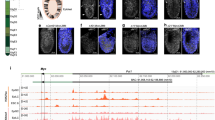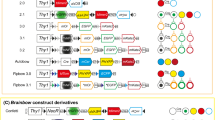Abstract
The recombinant limb is a model system that has proved fruitful for analyzing epithelial-mesenchymal interactions and understanding the functional properties of the components of the limb bud. Here we present an overview of some of the insights obtained through the use of this technique. Among these are the understanding that fore or hind limb identity is inherent to the limb bud mesoderm, that the apical ectodermal ridge (AER) is a permissive signaling center and that the limb bud ectoderm plays a central role in the control of dorsoventral polarity. Recombinant limb studies have also allowed the identification of the affected tissue component in several limb mutants. More recently this model has been applied to the study of regulation of gene expressions related to patterning. In this report we use recombinant limbs to analyze pattering of the Pax3 expressing limb muscle cell lineage in the early stages of limb development. In recombinant limbs made without the zone of polarizing activity (ZPA), myoblasts appear intermingled with other mesodermal cells at the beginning of the recombinant limb development. Rapidly thereafter, the muscle precursors segregate and organize around the central forming chondrogenic core of the recombinant. Although this segregation is reminiscent of that occurring during normal development, the myoblasts in the recombinant fail to proliferate appropriately and also fail to migrate distally. Consequently, the muscle pattern in the recombinant limb is defective indicating that normal patterning cues are absent. However, recombinant limbs polarized with a ZPA exhibited a larger mass of muscle cells and a more normal morphogenesis, supporting a role for this signaling center in limb muscle development. Finally, we have ruled out host somite contributions to recombinant limbs by grafting chick recombinant limbs to quail hosts. This initial report demonstrates the value of the recombinant limb model system for dissecting the environmental cues required for normal muscle limb patterning.
Similar content being viewed by others
Author information
Authors and Affiliations
Additional information
Received: 31 August 1998 / Accepted: 29 September 1998
Rights and permissions
About this article
Cite this article
Fernandez-Teran, M., Piedra, M., Ros, M. et al. The recombinant limb as a model for the study of limb patterning, and its application to muscle development. Cell Tissue Res 296, 121–129 (1999). https://doi.org/10.1007/s004410051273
Issue Date:
DOI: https://doi.org/10.1007/s004410051273




